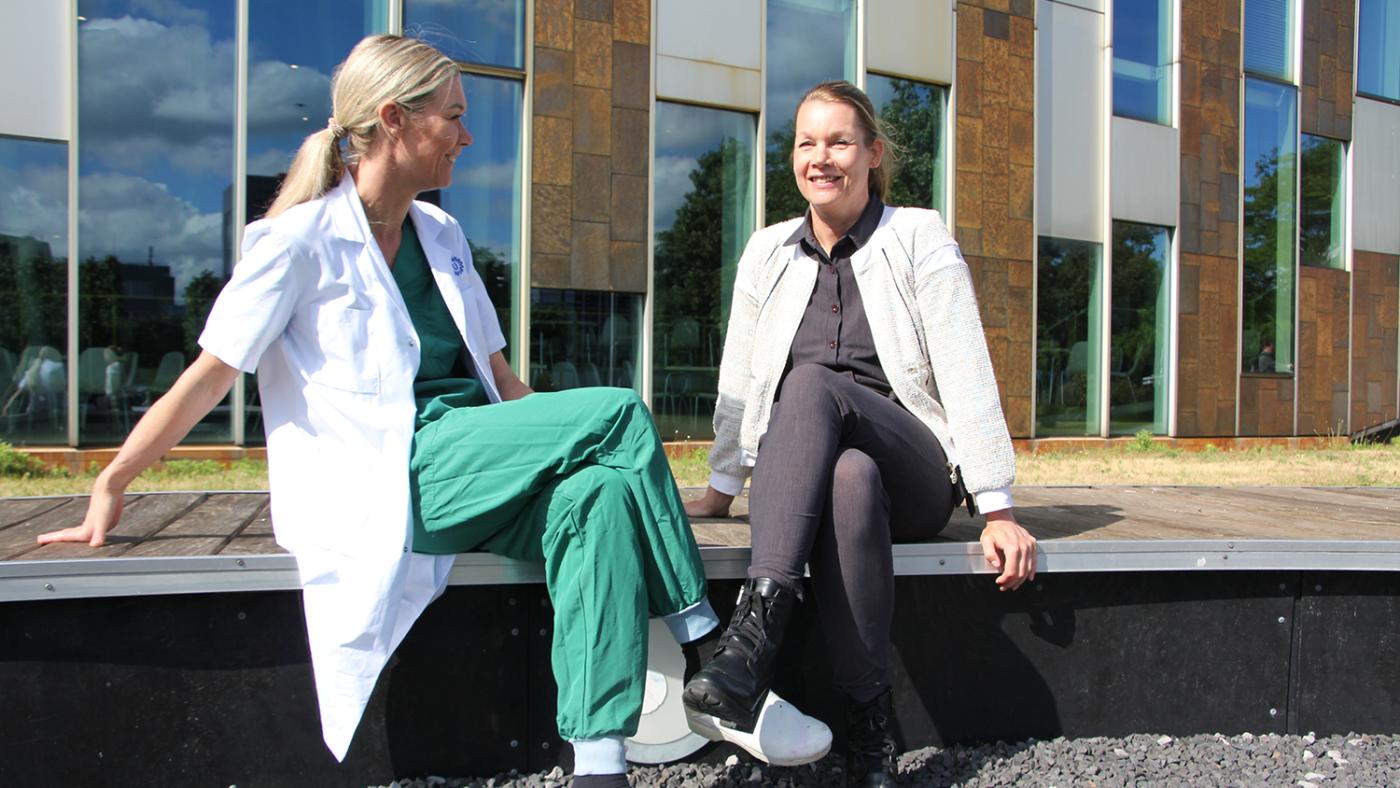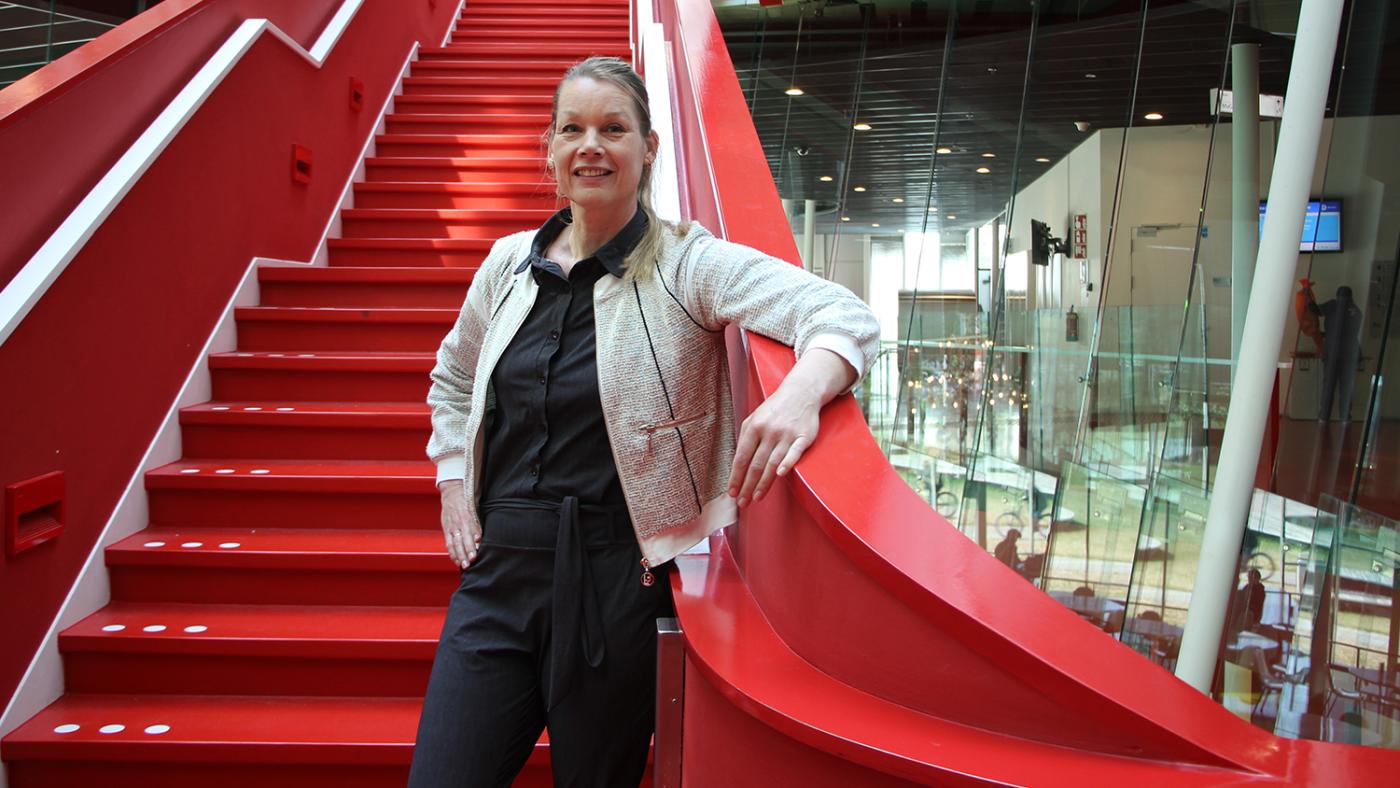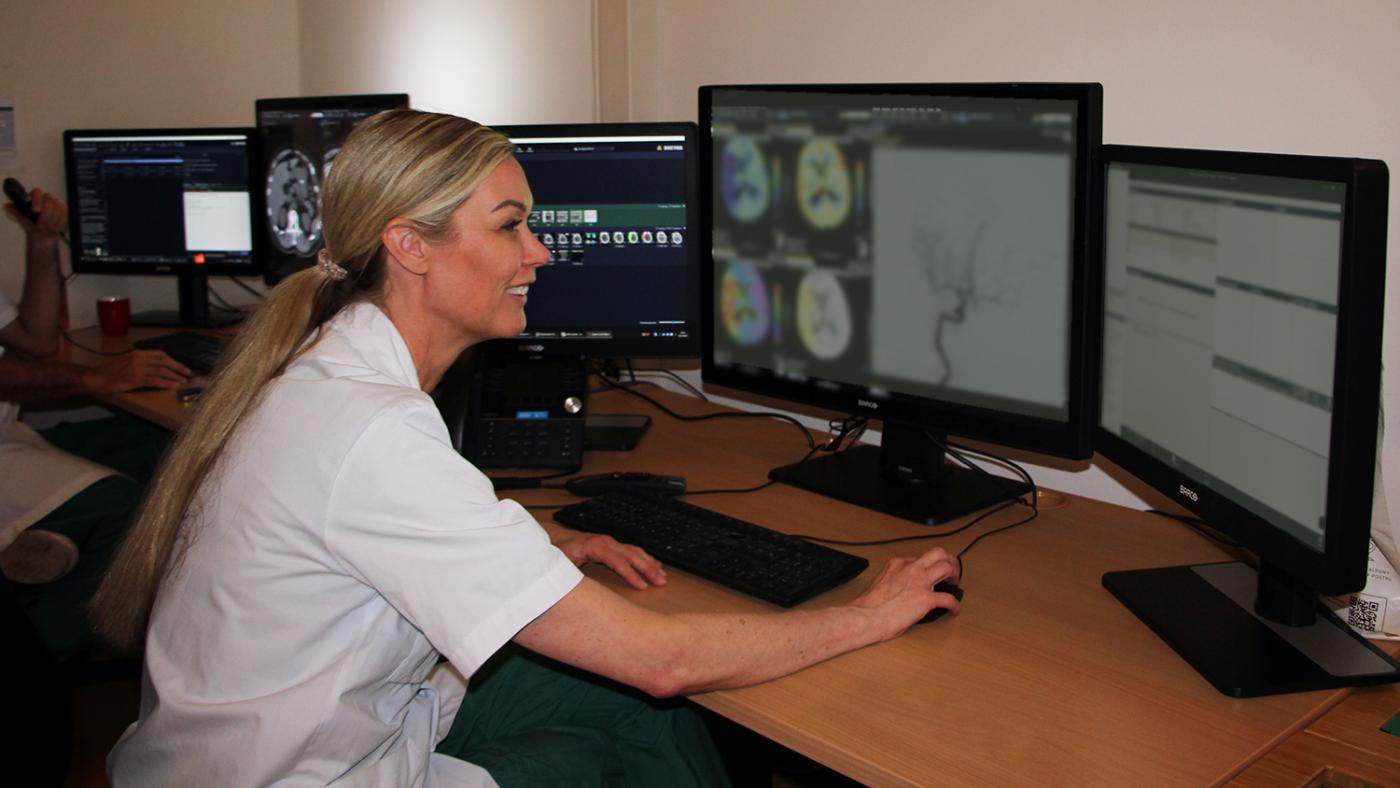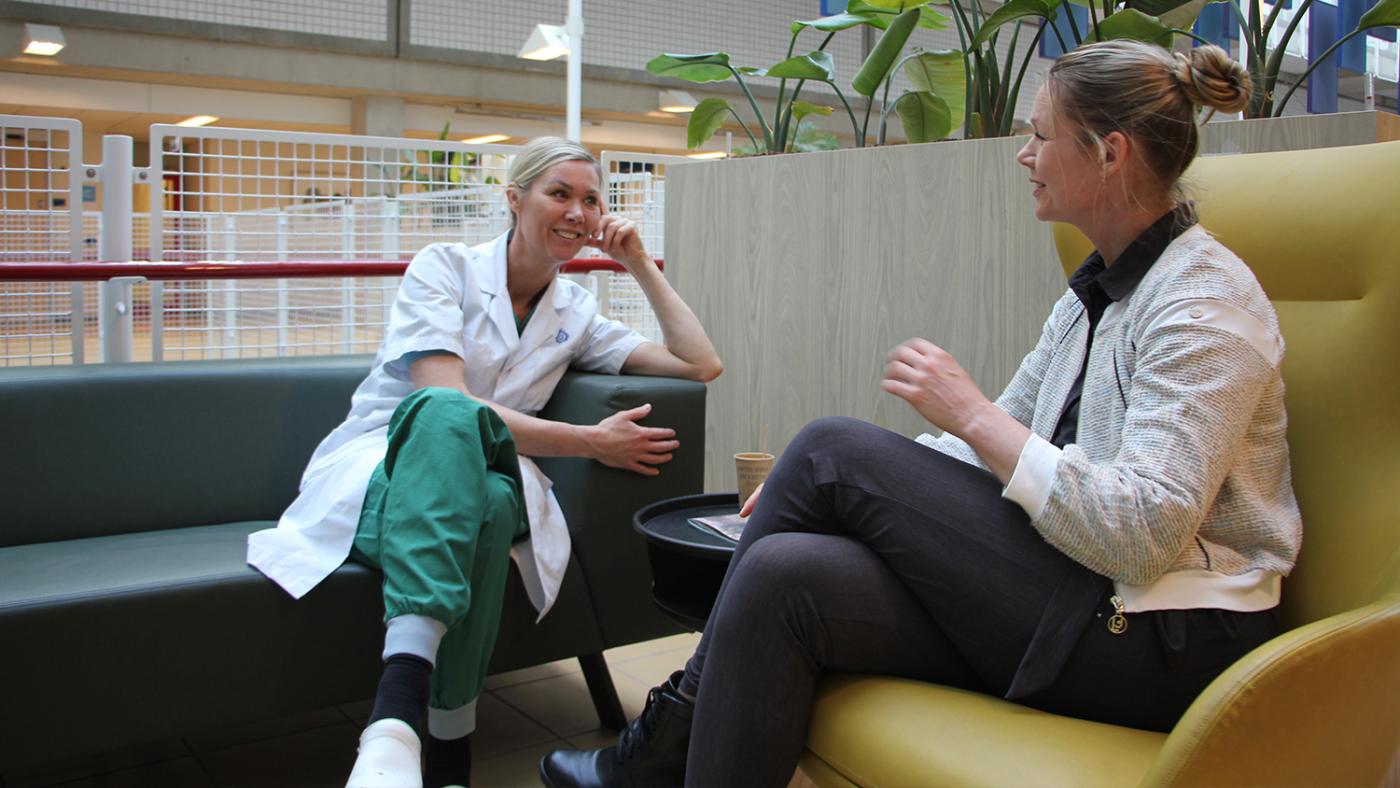Professor by title, sister by heart
‘Science is not something you can do on your own’

15 February 2025 was a wonderful day for the Van der Schaaf family: another full professor joined their ranks. Irene (49) was appointed the first female professor of Interventional Neuroradiology in the Netherlands, at the University Medical Centre Utrecht (UMCU). Seven years earlier, her sister Marieke (50) was appointed full professor. She holds the chair in Research & Development of Health Professions Educations. It is a scenario that neither sister had foreseen when they graduated with honours on the same day twenty years ago.
"It wasn't a premeditated plan to become a professor," says Marieke, who is director of the Utrecht Center for Research and Development of Health Professions Education affiliated with the Education Centre at the UMCU. She conducts research into the learning and development of healthcare professionals for the future. "We always had academic ambitions and are both extremely passionate, and our main motivation was to immerse ourselves fully in our profession." The recently appointed Irene is a medical specialist in interventional radiology with a special focus on training medical specialists.

Marieke van der Schaaf
"As an educational scientist, my research focuses on the learning of healthcare professionals and the optimisation of this learning process within learning and working environments. Nowadays, they are expected to have adaptive expertise, which means that they are good at their job and also agile and flexible, a central topic in my studies. My research also focuses on the conditions that promote this adaptive expertise, with a specific focus on the role of feedback and innovations. We do this based on the educational strategy of De Nieuwe Utrechtse School, in which the UMC collaborates with the UU and the HKU. In addition, I have had the opportunity to develop a great PhD programme with colleagues, which will connect the next generation of researchers to our community.”
Nothing comes for free
During the interview, it is clear that the sisters spend a lot of time together, both privately and at work. They finish each other's sentences and have the same clothing style and hairstyle – consciously or unconsciously?
It is a synergy they have had since childhood, it turns out. The sisters are first-generation students, raised by their mother, who worked hard to keep the family going. For Irene, her mother is a real role model. ‘She taught me not to give up too quickly. We were also given a lot of autonomy at a young age, which taught us to take responsibility for our own behaviour quite early on.’‘ "Well," Irene reflects with a smile, "we really had a 'nothing comes for free' upbringing."
During their PhD programmes, a new, professional dimension was added to their relationship; they were each other's rock during their PhDs and acted as each other's paranymphs during the defence. Before that, they didn't really have much insight into each other's work. Marieke is an educational scientist and Irene is a radiologist. "We've been close our whole lives, but during our PhD programmes, we grew even closer professionally. Even though you're in a different field, you still do the same type of work," says Irene.
The sisters studied together a lot, which made the PhD process more enjoyable and less lonely. Marieke: "We would meet up in the evenings or at the weekend for a cup of tea. When Irene had a significant P-value and I had a successful interview, we had a really fantastic evening!" Smiling, she adds: "On other evenings, we had to cheer each other up when things weren't going so well." Irene: "Yes, haha, science is of course also a lot of suffering."
"We also checked each other's texts,"says Marieke. "I remember that Irene really thought my pieces were terrible. And I also remember a heated discussion about 'the gold standard'. Irene looked at it very differently from her perspective as a medical scientist than I did as a social scientist."

Irene van der Schaaf
"My field, neurointerventional radiology, is a dynamic and groundbreaking field. I really like the fact that innovation doesn't just happen in the angiography room within your own hospital, but in collaboration with other universities, private parties and with the involvement of patients. It's incredibly cool that I can now use my professorship to build a strong team, in which I can supervise talented PhD students and train them to become the healthcare professionals and researchers of the future. It is precisely this joint creation of progress, together, that I see as a source of energy and inspiration."
Cross-pollination
During their PhD programmes, the duo agreed to set up a joint project. "This was based on our ambition, but also because we enjoyed working together," says Irene.
And it has been a great success. In addition to their own scientific careers, they have also been working together for more than ten years. Van der Schaaf & Van der Schaaf have several articles to their name.
They have also jointly supervised a PhD student who was awarded the Prize for the Best Thesis in the field of healthcare education by the Dutch Association for Medical Education in 2017. They have also set up several research projects in which they combine their fields of expertise and associated paradigms and take a multidisciplinary approach.
When they see an opportunity for collaboration, they seize it. Irene: ‘"At one point, a professor of education joined the radiology department. I thought: great, I could collaborate with him on a research project on innovation in radiology education, which I could do together with Marieke."
"And it was the same the other way around," says Marieke. "At the time, there was a lot of attention in educational sciences for eye tracking and image interpretation, an area that Irene works in. When there was an internal call for research funding, Irene and I pitched a project. It was approved."
Their work also gave them joint opportunities to explore abroad. "We've been to the University of California in San Francisco a few times," says Marieke. There's a group of scientists there doing research into healthcare education with PhD students whom Marieke supervises together with colleagues. It's part of the PhD Programme in Life Sciences Education Research at Utrecht University, where Marieke is director. "Irene has also done a lot of research there in the past and has connections within radiology, so she was able to join us."

Collaboration
They often come up with ideas when they go for a walk or have a drink somewhere in the city. "We quickly form ideas about what we find interesting, what could be improved and how we can get there. We complement each other quite easily, so plans arise naturally," says Irene. Marieke: "Tomorrow we have another new plan to discuss. I think our projects are taking off because we are very creative together and see possibilities."
Working together is something from their childhood that they have brought with them to the academy. "For us, teamwork and solidarity are very normal. At home, the three of us used to have to do everything together, such as odd jobs around the house, housework and cooking. Science is also about sharing. It's not something you can do on your own. That's how we both approach leadership, where teamwork and sharing is caring are paramount.”
When they look to the distant future, they hope to still be sitting on a bench drinking tea and making plans as old ladies. "Our stream of thoughts together just never stops," Marieke and Irene conclude with a laugh.